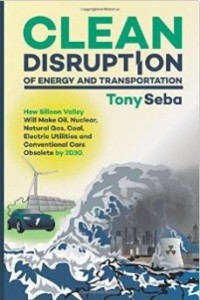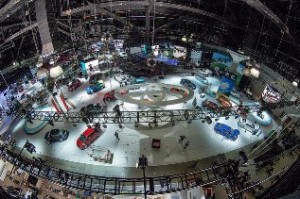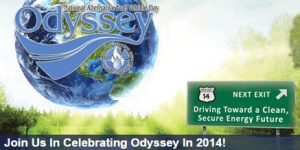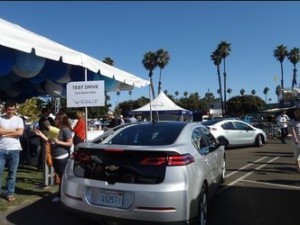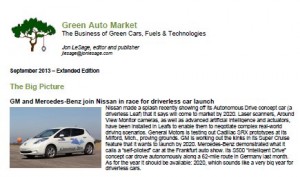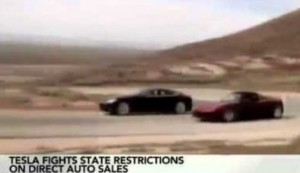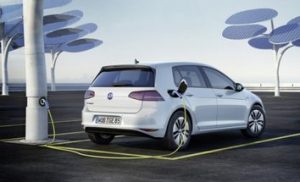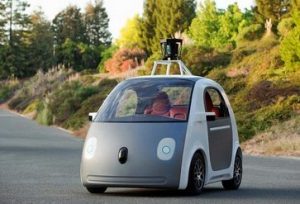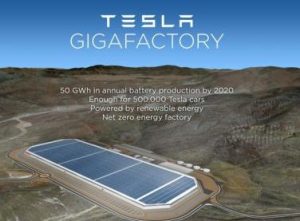by Jon LeSage, editor and publisher, Green Auto Market
Here’s my take on the 10 most significant and interesting occurrences during the past week…….
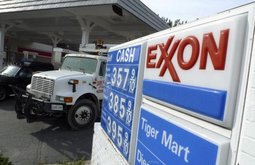 While there are several challenges to increasing electric vehicle (EV) and other alternative fuel vehicle sales, I would say that gasoline prices are one that don’t get mentioned enough. The uprisings in Iraq and Syria caused analysts to forecast increases through this year, but that is not the case today. A survey by analyst Trilby Lundberg reported that gas prices have been down 34 cents since the beginning of summer. GasBuddy is predicting the downward trend will continue. The US Dept. of Energy (DOE) estimates the national average gasoline price for all of 2014 will be $3.46 a gallon, its lowest annual average since 2010. The DOE predicts the average will fall again, to $3.41, in 2015. Survey researchers at Indiana University released an exhaustive study that found consumers are misinformed about EVs – with 75% incorrectly underestimating the benefits of the vehicles. Softening gas prices tend to hit hybrids the hardest in new vehicle sales and used vehicle values. With gasoline prices staying down for now, the challenge increases on how to inform consumers and fleets about the gains available through EVs, hybrids, natural gas vehicles, propane, and hydrogen.
While there are several challenges to increasing electric vehicle (EV) and other alternative fuel vehicle sales, I would say that gasoline prices are one that don’t get mentioned enough. The uprisings in Iraq and Syria caused analysts to forecast increases through this year, but that is not the case today. A survey by analyst Trilby Lundberg reported that gas prices have been down 34 cents since the beginning of summer. GasBuddy is predicting the downward trend will continue. The US Dept. of Energy (DOE) estimates the national average gasoline price for all of 2014 will be $3.46 a gallon, its lowest annual average since 2010. The DOE predicts the average will fall again, to $3.41, in 2015. Survey researchers at Indiana University released an exhaustive study that found consumers are misinformed about EVs – with 75% incorrectly underestimating the benefits of the vehicles. Softening gas prices tend to hit hybrids the hardest in new vehicle sales and used vehicle values. With gasoline prices staying down for now, the challenge increases on how to inform consumers and fleets about the gains available through EVs, hybrids, natural gas vehicles, propane, and hydrogen.- The UN Climate Summit took place last week at the UN Headquarters in New York City. It all started on Sunday, Sept. 21 with the People’s Climate March where more than 300,000 people took the streets in the largest-ever climate change rally. The purpose of the conference was to raise support for a worldwide climate agreement in Paris in 2015. In a speech at the summit, President Obama called for a more ambitious global approach to environmental issues; he talked about a new push to boost what the White House calls “global resilience” in the face of climate change. Environmental groups such as Natural Resources Defense Council and Sierra Club were pleased to see the street march on the 21st, and have called on the White House and US Environmental Protection Agency to stay committed to reducing carbon at power plants and through energy and transportation policies.
- US Department of Energy’s Clean Cities issued a reminder on fleets earning credits on the Alternative Fuel Transportation Program. Covered fleets can earn credits for some vehicles that don’t meet the Energy Policy Act of 1993 definition of an alternative fuel vehicle (AFV). The new policy adds half credits for certain hybrid electric vehicles, plug-in EVs, and fuel cell vehicles; and one quarter credit for neighborhood electric vehicles. Medium- and heavy-duty hybrids are also eligible for a half credit after a fleet has met its light-duty AFV acquisition requirements.
- Well, well, well………. Tesla Motors officially exists in the auto industry. Automotive News, the “bible” of the auto industry, has asked Tesla CEO Elon Musk to be a featured speaker at Automotive News World Congress in January. Now, if anybody boos and hisses at him from the audience……..
- Westport Innovations Inc. released its newest proprietary technology, the first generation of enhanced spark-ignited (ESI) natural gas system. The new natural gas combustion technology is designed to provide vehicle and engine original manufacturers (OEMs) with a “downsized” natural gas solution that is cost competitive while providing similar levels of power, torque, and fuel economy to a larger diesel engine.
- Stevens Creek BMW in Santa Clara, Calif., is offering a good deal on a BMW i3 lease. It’s offering a $369 per month payment on a 36-month lease with $3,995 due at signing. Sales of the BMW i3 were about $350 a month for its first three months on the market before being increased. Sales have been very strong – 2,082 units sold from May to August, and a spike in numbers during August at 1,025. The Tesla Model S now has a direct competitor.
- Hewlett-Packard, Lowe’s and Home Depot were among the 2014 winners of the US Environmental Protection Agency’s SmartWay awards. Freight transport companies are honored for improving fuel efficiency, reducing greenhouse gas emissions, and reducing air pollution. The award honors top truck, intermodal, and rail carrier partners that are setting efficiency benchmarks in how they move products and supplies.
- University of Michigan Energy Institute professor John DeCicco thinks that self-driving cars can make transportation much greener and more sustainable. Connecting cars to the infrastructure around them can make traffic flow much more efficiently, along with other gains. I think I might agree with him.
- Former GM vice chair Bob Lutz made another interesting statement: Tesla Motors will only be a “fringe brand” until it introduces the smaller and less expensive Model 3 in late 2017. Lutz also thinks Tesla stock is “grossly overvalued” for now.
- Standard Oil tycoon John D. Rockefeller’s heirs are divesting from fossil fuels. The $860 million philanthropic organization, the Rockefeller Brothers Fund, will be divesting from stock in fossil fuels because of its harmful impact on climate change. The announcement was timed to coincide with the UN Climate Summit.

